The Tateyama Kurobe Alpine Route is a single day mountain traverse where you take 8 different modes of transportation. Walk next to a 7-meter snow wall in the springtime, visit Japan’s highest dam, and travel through mountains on an electric bus.
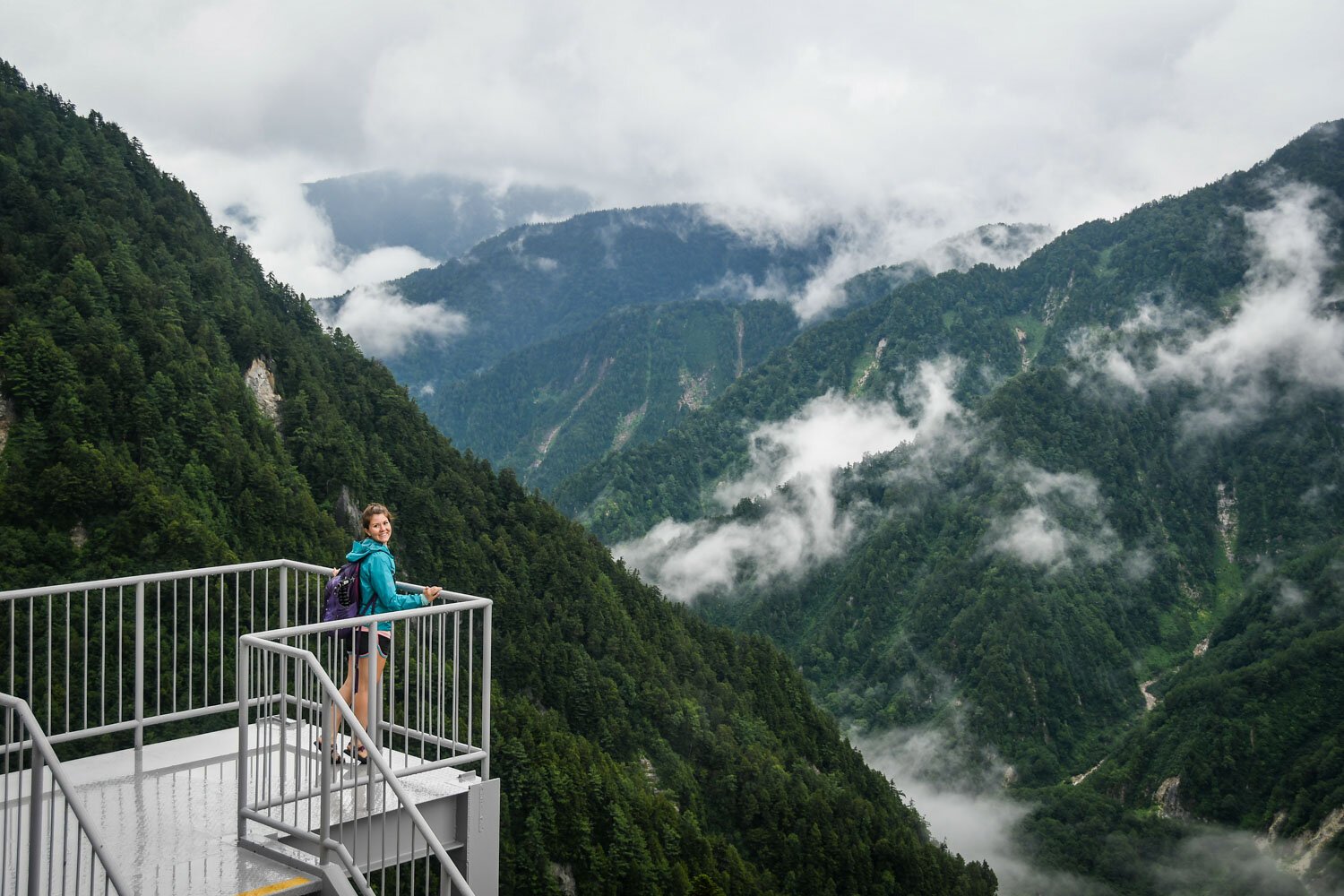
The Tateyama Kurobe Alpine Route takes you through epic landscapes, lush green valleys and past a few of the highest peaks in Japan.
Each season on the alpine route is a completely different experience. In the springtime, there is a massive snow wall up to 20 meters tall, while in autumn the fall foliage is on display.
While Japan is famous for its big metropolises like Tokyo, there is so much of the country surrounded by mountains and waiting to be explored.
In this article, we’ve laid out all the stops along the Tateyama Kurobe Alpine Route, including what to do and tips for things like how to save money on your ticket.
If you’re itching to get out of the city and into nature, we’d highly recommend adding the Tateyama Kurobe Alpine Route to your Japan itinerary.
Tateyama Kurobe Guide
- What is the Tateyama Kurobe Alpine Route?
- When to go
- How to get there
- One day Tateyama Kurobe Alpine Route itinerary
- Where to stay before and after
- What to pack
- Luggage delivery
- How to book
- FAQs
What is the Tateyama Kurobe Alpine Route?
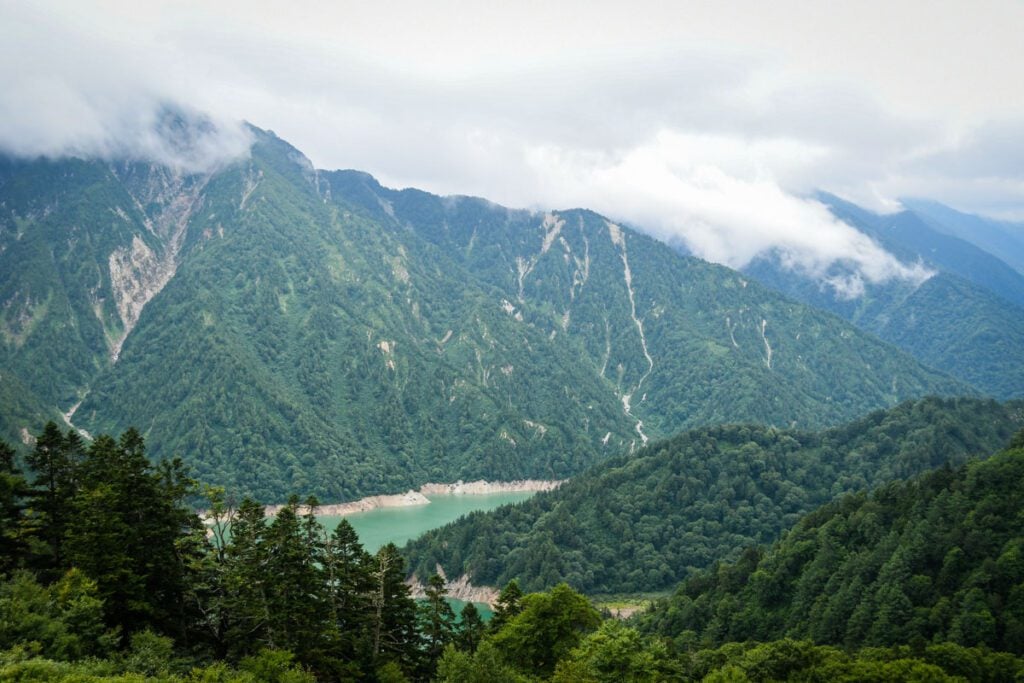
Known as the Roof of Japan, the Tateyama Kurobe Alpine Route is a sightseeing mountain traverse where passengers take 8 different modes of transportation, including a cable car and a ropeway, to travel from one side of the Kita Japanese Alps to the other.
The entire route can be completed in one day, but if you have extra time (and money) you can stay at the highest hotel in Japan, Hotel Tateyama.
We traveled west to east, starting the day in Toyama and traveling across the route to Omachi, but you can extend it to Nagano if you want. You can also reverse the route by traveling east to west.
At each stop along the route, you can get out and explore the alpine flora and fauna, among other things to do. We’ve detailed everything you’ll want to checkout in our route itinerary below.
→ Psst! Check out our list of the most beautiful places in Japan you’ll have to see to believe!
Best time to traverse the Tateyama Kurobe Alpine Route

Famous for its unparalleled mountain scenery, the Tateyama Kurobe Alpine Route offers a unique experience in every season. However, it’s important to note that the route is only open from April 15th to November 30th, annually.
If you are traveling to Japan in winter, between December 1 and April 14th, you will not be able to traverse the route.
During its open season, the route will offer uniquely different experiences depending on the time you visit.
In the springtime, the entire mountain range will be covered in snow. One of the best things to do on the route during this time is to do the Snow Wall Walk in Murodo. The walk passes through a corridor with impressively tall (sometimes up to 65 ft/20 m) snow walls.
Summer attracts visitors to the Alpine Route with the best weather for outdoor activities such as hiking.
During autumn in Japan, the Tateyama Kurobe Alpine Route is one of the first places in the country to start seeing the leaves turn as the fall foliage comes to life.
As you’re planning your trip, check out our guide to the best time to visit Japan to give you a better idea of the seasonal weather patterns and other factors.
Weather on the Alpine Route

The weather at the top of the pass is very unpredictable and can change rapidly. It will also get really cold (duh, it’s the alps!).
From April to mid-June, there will be snow on the ground and the weather can dip down below freezing.
In summer months from mid-June to the end of August, the temperature will range from 50°F – 70°F (10-20°C), but you’ll still want a light jacket because it gets pretty windy.
In September and October, the leaves on the trees start changing colors earlier than any other place in Japan. The temperature will drop below 50°F (10°C) and snow tends to fall near the end of October.
During the beginning of November, the route will have plenty of snow so be prepared with warm winter gear.
How to get to the Tateyama Kurobe Alpine Route

Depending on where your departure destination is, you may choose to do the route in either direction. Since the Tateyama Kurobe Alpine Route is a one-way route, you’ll have to arrange accommodation and/or transportation for both ends.
From West to East
Toyama City is the starting point of the Alpine Route for most travelers coming from the West. Toyama Station is your entrance point to the city and it’s right next to Toyama-Dentetsu Station which is the official start of the route.
From Kyoto:
There is no direct route to Toyama from Kyoto. You will have to take the JR Thunderbird Limited Express train to Kanazawa and then transfer to the JR Hokuriku Shinkansen train to Toyama.
The journey takes about 2 hours and 30 minutes and there are multiple trains leaving every hour. A one way ticket will cost you 8500 yen (~$65 USD), but it is fully covered by your J Rail Pass.
Check 12go.Asia for transportation options and schedules.
→ Psst! Check out our bucket list of things to do in Kyoto before you leave!
From Osaka:
You’ll have to make the journey to Toyama via Kyoto. First take the Special Rapid Train on the JR Kyoto Line from Osaka to Kyoto. The journey will take just 30 minutes and cost you 560 yen (less than $5 USD).
From there you’ll transfer to the JR Thunderbird Limited Express and continue your journey with the directions above.
Check 12go.Asia for transportation options and schedules.
→ Psst! Make sure to read about the best things to do in Osaka!

From East to West
Nagano City is the starting point of the Alpine Route for most travelers coming from the East. From there, you have the option of taking a bus, train or taxi to reach the route.
From Tokyo:
You can take the Hokuriku Shinkansen train from Tokyo Station to Nagano Station. The journey takes about 1 hour and 45 minutes and there are multiple trains leaving every hour. The ticket will cost you 8000 yen (~$60 USD), but it is fully covered by your J Rail Pass.
Check 12go.Asia for transportation options and schedules.
→ To learn more about getting around Japan and how to save money on train tickets, check out our complete guide to getting the J Rail Pass.
One day Tateyama Kurobe Alpine Route itinerary

We traveled from Toyama to Omachi, but if you want you can continue on to Nagano. Below we’ll explain the route, stops along the way and transportation you’ll take.
Itinerary overview
- Start the Tateyama Kurobe Alpine Route from the Toyama-Dentetsu Station
- Take the Toyama Chico Railroad to the Tateyama Station (60 minutes)
- Ride the Tateyama Cable Car to Bijodaira Station (7 minutes)
- Take the Tateyama Highland Bus to Midagahara (30 minutes)
- Take the Tateyama Highland Bus to Murodo (20 minutes)
- Ride the Tateyama Tunnel Trolleybus to Daikanbo (10 minutes)
- Ride the Tateyama Ropeway gondola to Kurobedaira (7 minutes)
- Ride the Kurobe Cable Car to the Kurobe Dam (5 minutes)
- Take the Kanden Electric Tunnel Bus to Ogizawa Station (16 minutes)
- Take a local bus to Shinano-Omachi Station where the route ends (40 minutes)
1. Toyama-Dentetsu Station

Toyama station is the big JR Station and Toyama-Dentetsu Station is the local station just south of the JR Station.
Don’t forget! Be sure to purchase the Tateyama Kurobe Option Ticket the day before you want to go on the route. Tickets can be purchased at the JR Station Ticket Counter.
Extra Luggage? You can ship your bags from Toyama-Dentetsu Station to your end destination (like Shinano-Omachi Station or Nagano Station). No need to make a reservation, you can just drop off your baggage just before you enter the turnstile (staff is on the right side when facing the trains) before 9:50 a.m.
We tagged our bags and paid 1,500 yen to ship them from Toyama Dentetsu Station to Shinano-Omachi Station. Prices vary depending on drop off and pick up locations, you can find more information here.
- Next Transportation: Toyama Chico Railroad
- Duration: 60 minutes
The train travels through the rural areas outside of Toyama. As you creep closer and closer to the mountains, look out the right side of the train to get great views of the surrounding hills.
2. Tateyama Station
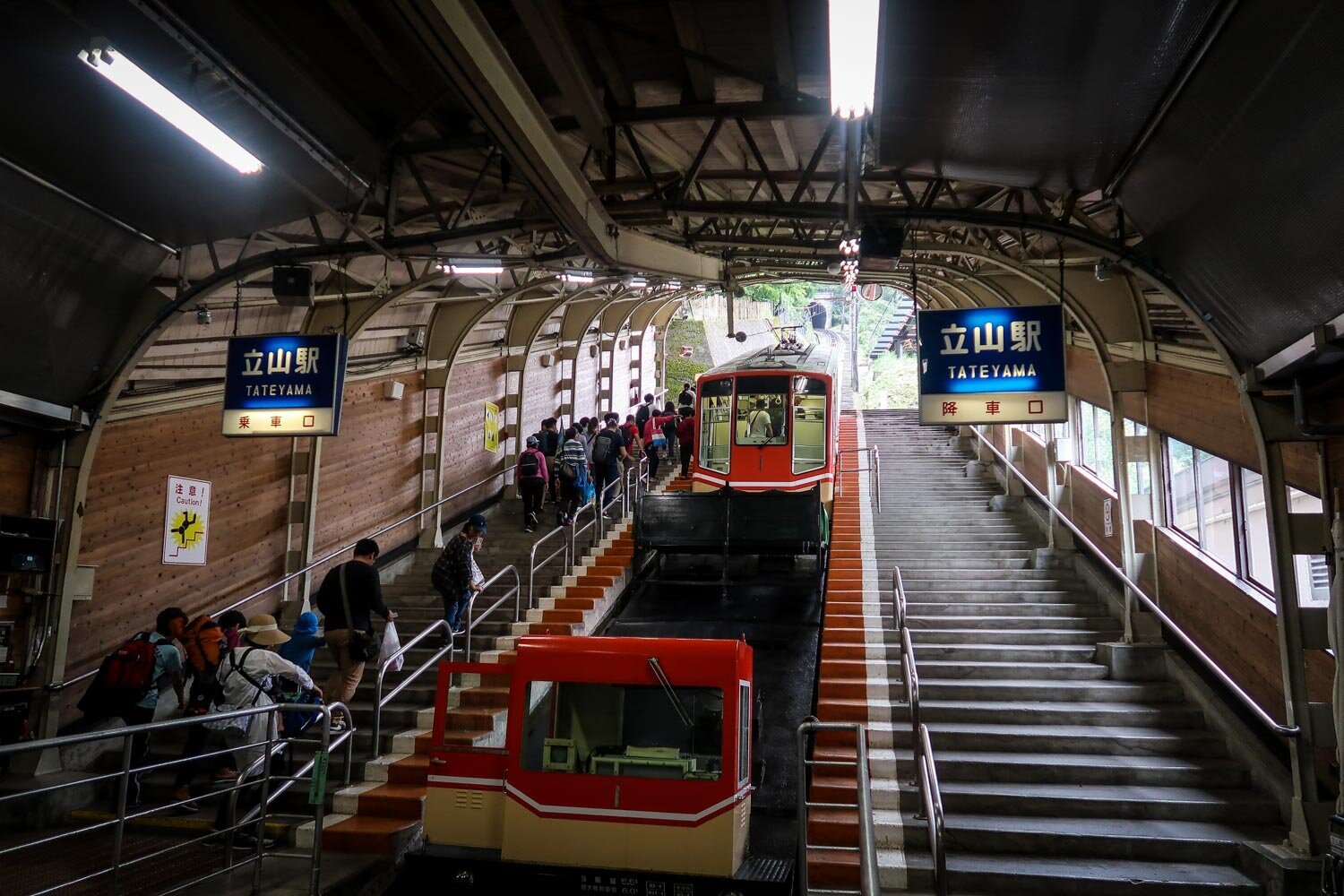
- Elevation: 475 meters / 1558 ft
The Tateyama Station is quite small and basically is used as a transfer point from the train to the cable car.
If you got a really early start, you could take the Shomyo Falls Sightseeing bus to the 350m Shomyo Falls. We opted not to go because it is a 2-hour return trip via bus and foot. On the bus between Bijodaira and Murodo there is a viewpoint that our driver slowed down so we could see the falls, but it was only through the bus windows.
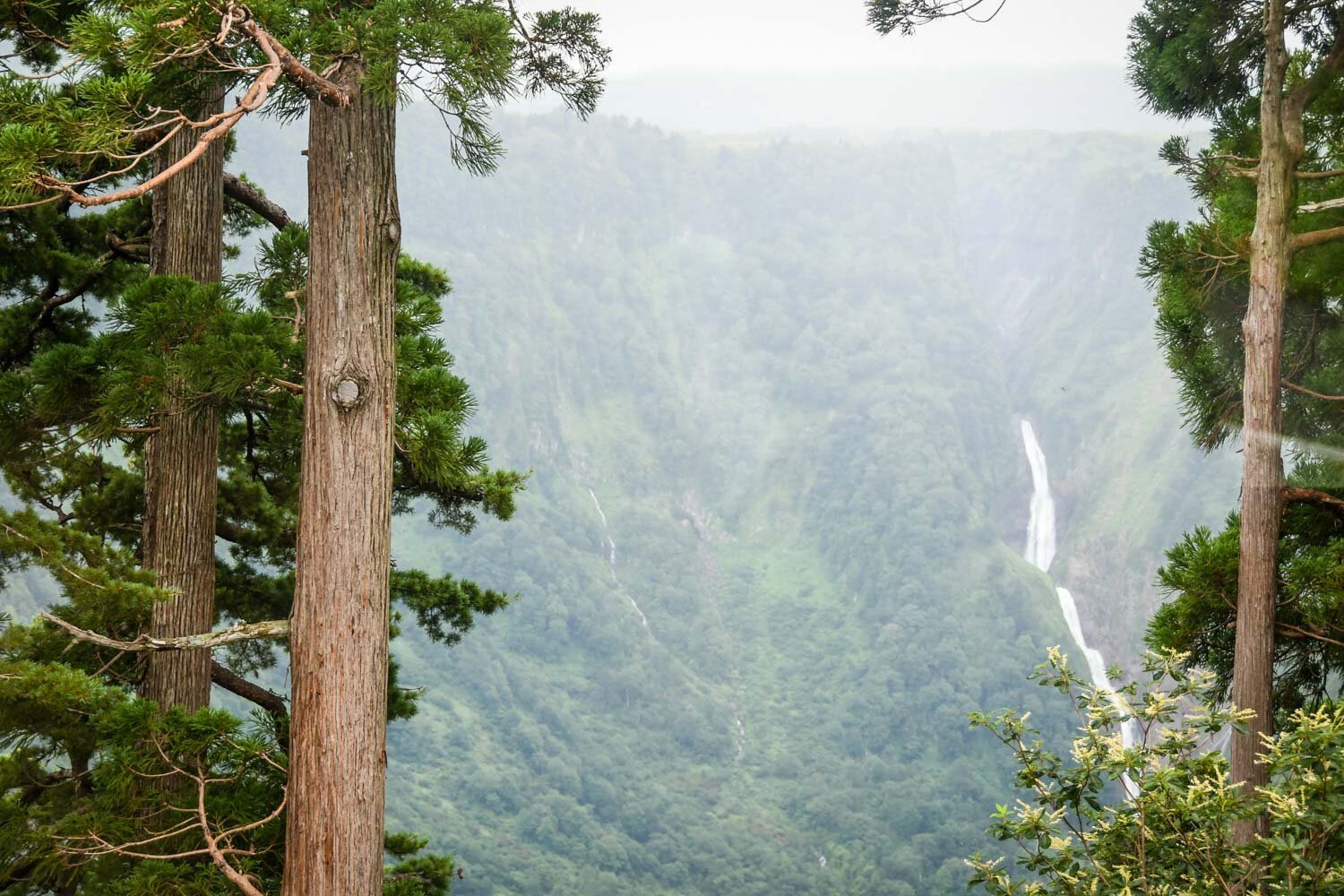
- Next Transportation: Tateyama Cable Car
- Duration: 7 minutes
Our favorite spot in the cable car is at the very front, facing downhill. You’ll have to stand but the views out the big front window are worth it!
3. Bijodaira

- Elevation: 977 m / 5205 ft
Outside of Bijodaira Station, there are 3 walking loops at various lengths: 2 km, 2.5 km, and 4 km. We only had 30 minutes until the next bus we wanted to take so we decided to walk a little bit of the short loop.
This area is known for the primeval forest containing multi-century old cedars and beech trees. The trails outside of Bijodaira are decent and fun to explore for a bit. These massive trees are so old some have been named “Beautiful Woman” cedar, “Child-raising” cedar, and “Ageless Tree”.
The only thing that would make hiking around here better is to go during autumn foliage in Late October and early November.
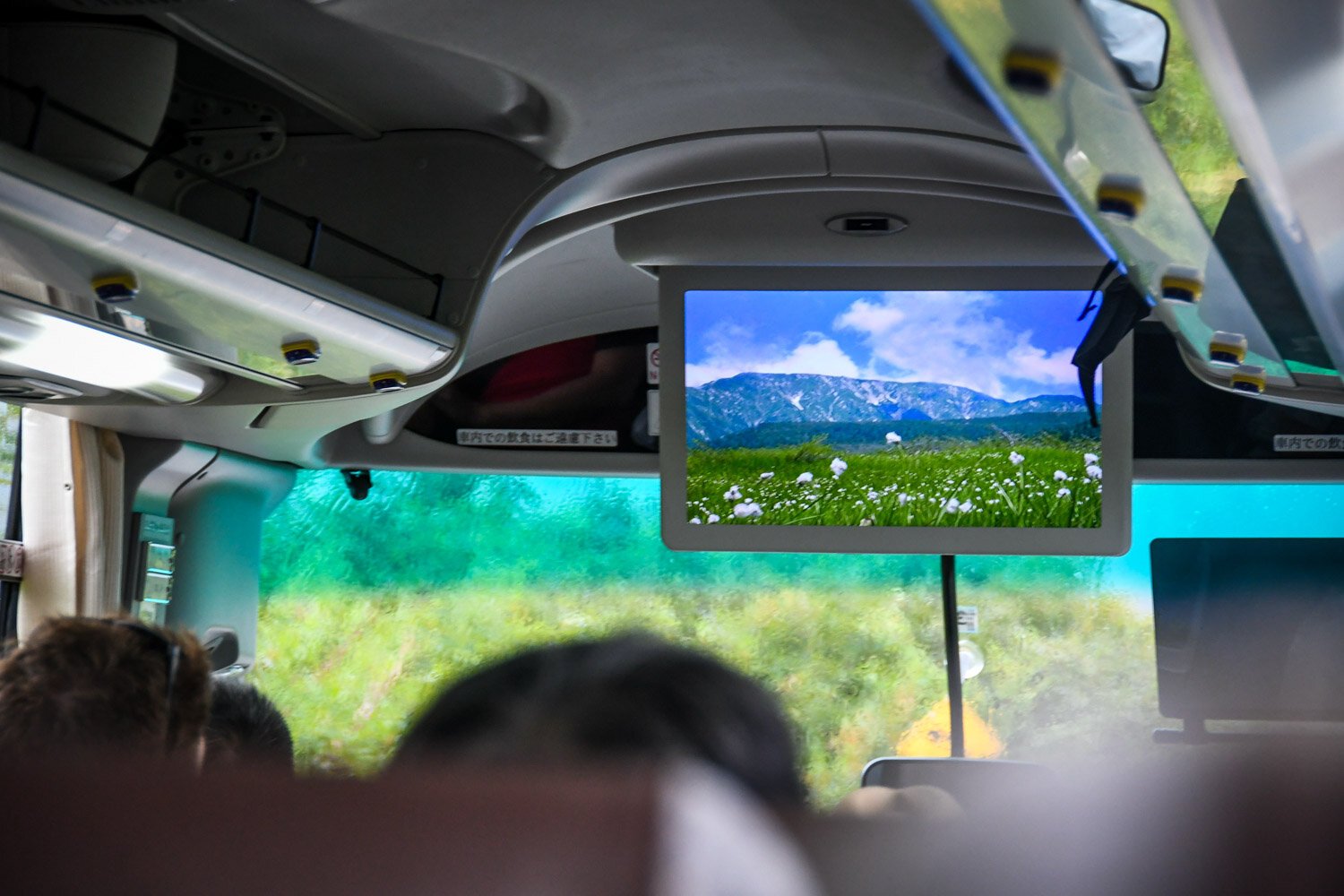
- Next Transportation: Tateyama Highland Bus
- Duration: 30 minutes to Midagahara, 50 minutes to Murodo
This comfortable bus takes you up the mountain roads and past the tree line. If you want to stop at Midagahara, be sure to check the bus or as the driver because some buses go directly to Murodo.
Throughout this ride, a recording is played in Japanese and English, sharing facts about the area and points of interest along the way. Keep an eye out for the Shomyo Falls viewpoint and the Sendo Cedar, one of Japan’s 100 biggest trees.
4. Midagahara
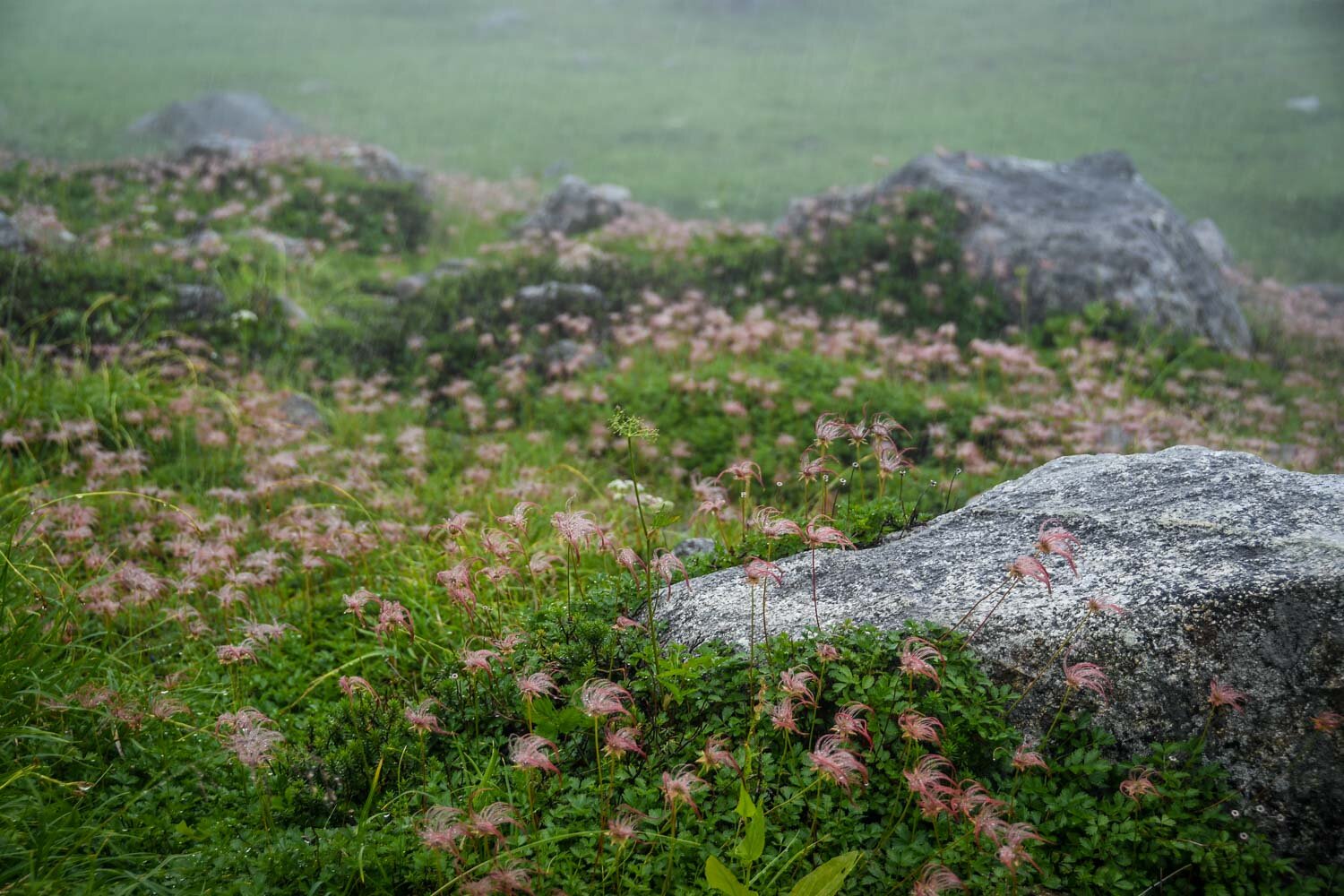
- Elevation: 1,930 m / 6632 ft
Get off the bus and walk along the boardwalk to see this protected wetland. You can spot wildflowers between June and September.
We didn’t stop here because it was raining pretty heavily when we drove by and the views were pretty clouded.
- Next Transportation: Same Tateyama Highland Bus
- Duration: 20 minutes to Murodo
From the months of April to early June, the bus will drive through the snow wall which averages 7 meters of snow every year!
5. Murodo

- Elevation: 2,450 m
The Murodo Terminal is the main destination for all travelers on the route. You’ll get off the bus at the terminal which is also the home to Hotel Tateyama, Japan’s highest hotel.
The terminal has lockers where you can store your belongings for various sizes ranging from 200 to 500 yen per locker.
Next to the Murodo Terminal is the Takeyama Nature Conservation Center. There is a video (in Japanese) about the area and other displays talking about the flora and fauna on the route.
The snow corridor walk
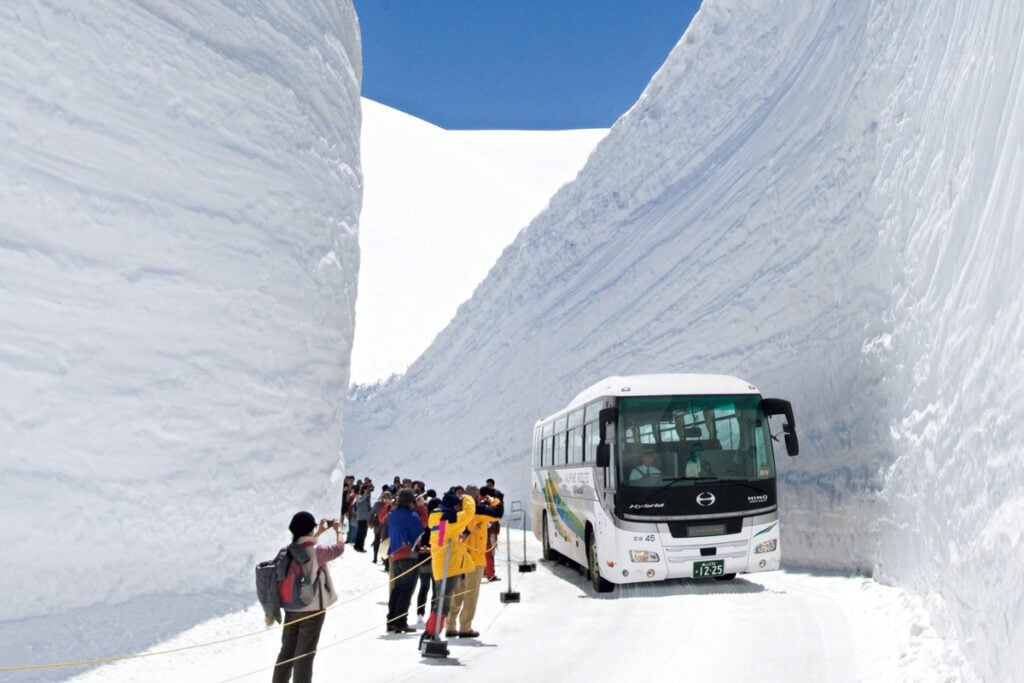
The real reason to go on the Alpine Route is to explore outside, and what you’ll do will depend on the season you travel here. In April and May, even some parts of June, you can explore the snow corridor walk that is steps away from the terminal.
Takeyama has some of the heaviest snowfalls in the world, with an average accumulation of 7 meters (23 feet) per year, but really heavy years up to 20 meters (65 feet)! The snow corridor walk features a plowed out path for visitors to walk between two massive walls of snow.
The most impressive time of year to see the Snow Wall is in April and May. However, the snow corridor exists until it melts away completely. The wall can stick around until parts of June, but there have been years where there still is snow in August.
Mikurigaike Pond Hike

Another highlight at Murodo is walking the rock path to Mikurigaike Pond. From the terminal, it is only 300 meters and a round trip of about 30 minutes.
From the pond, you’ll get a 360-degree view of the mountain peaks around you, including Mt. Oyama (3,003 m), one of Japan’s “Three Holy Mountains” along with Mt. Fuji and Mt. Hakusan. Unfortunately on the day we traveled the Alpine Route, we were covered in a rain cloud, so we didn’t have the best views.

Jigokudani
Walking by Mikurigaike Pond, there was the distinct smell of sulfur coming from the Jigokudani area, also known as Hell Valley. Vapor erupts from various vents in the ground and while there are walking paths around the Jigokudani area, it is closed off because of previous accidents caused by strong volcanic gas.
Hiking around Murodo
Being on the Roof of Japan, you would think you can’t get any higher, but there are a handful of hikes you start from Murodo.
Tip: Keep in mind your timing if you want to complete the Japan Alpine Route in one day. Otherwise, you’ll have to book a room in the hotel, dorm in the onsen, or camp.
- Mikurigaike Pond Return – Easy: 600 meters, 30 minutes return
- Mikurigaike Pond Loop – Easy: 1.7 km, 1 hour
- Raichozawa Return – Medium: 2.4 km, 2 hr 30 min
- Climbing Mt. Tateyama – Hard: 2.5 km, 4 hr
- Mt. Murodo Viewpoint – Medium: 2 km, 2 hr 30 min
Mikurigaike Onsen
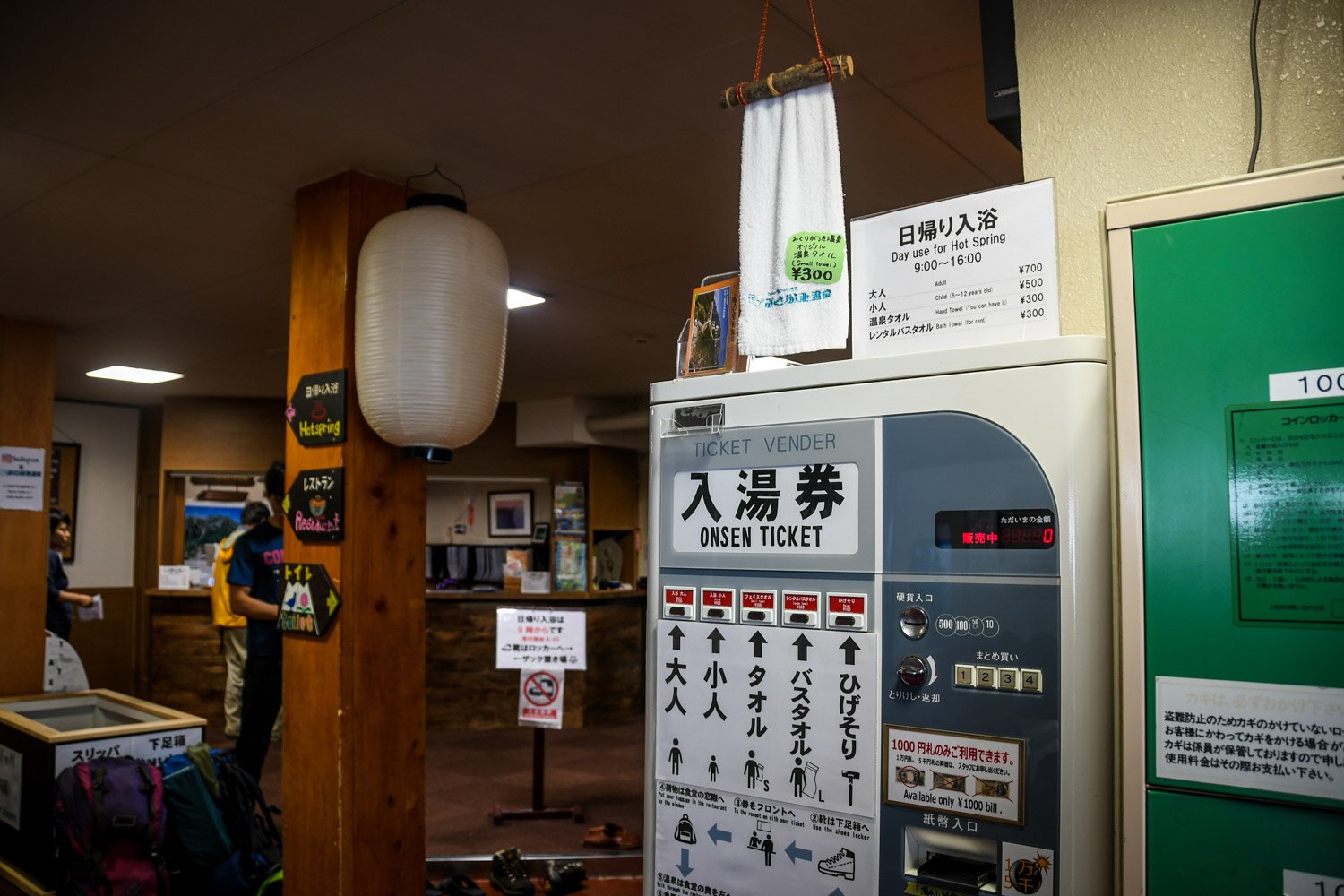
There’s no better way to warm up from the high altitude chills than in an onsen. About a 20-minute walk from the Murodo Terminal is the Mikurigaike Onsen, the highest altitude onsen in Japan.
The onsens are separated by gender and while they are not open-air onsens, they do have huge windows to look out into the majestic mountains. There is also a cafe (with ice cream) in the same building.
- Onsen Entrance Costs:
- Adults: 700 yen
- Children: 500 yen.
- Hours: 9:00 a.m. – 4:00 p.m.
Wanna stay longer? Reserve a dormitory room for 9,500 yen per night
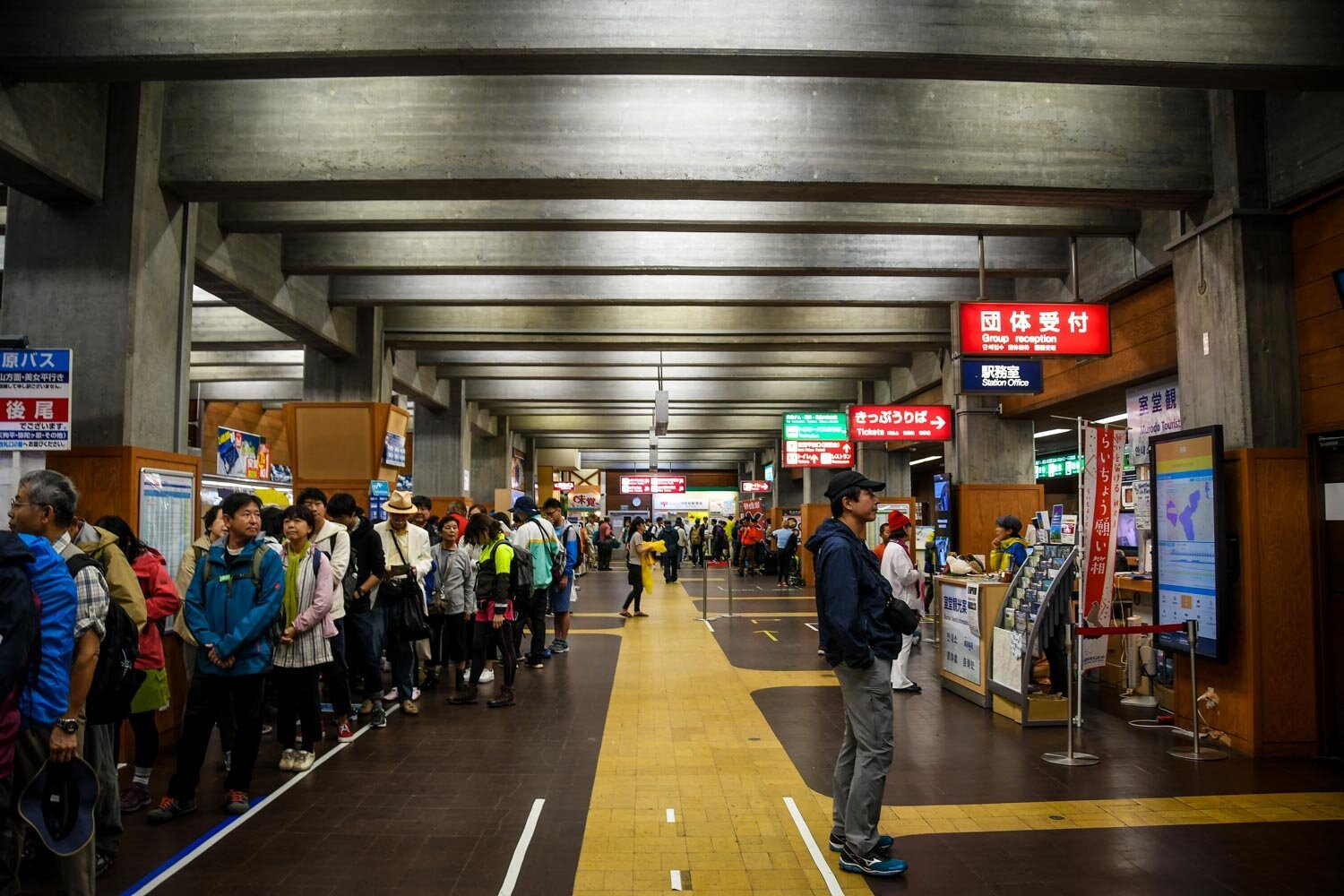
- Next Transportation: Tateyama Tunnel Trolleybus
- Duration: 10 minutes to Daikanbo
Nothing really to see, but pretty cool to think that you’re taking a bus through a freaking mountain. And it’s 100% electric!
6. Daikanbo

- Elevation: 2,316 m / 7598 ft
Once you emerge out of the mountain on the trolleybus, hop outside and get a view of the valley below. You can see the lake that was formed by the Kurobe Dam. This view would be especially beautiful during the fall foliage.
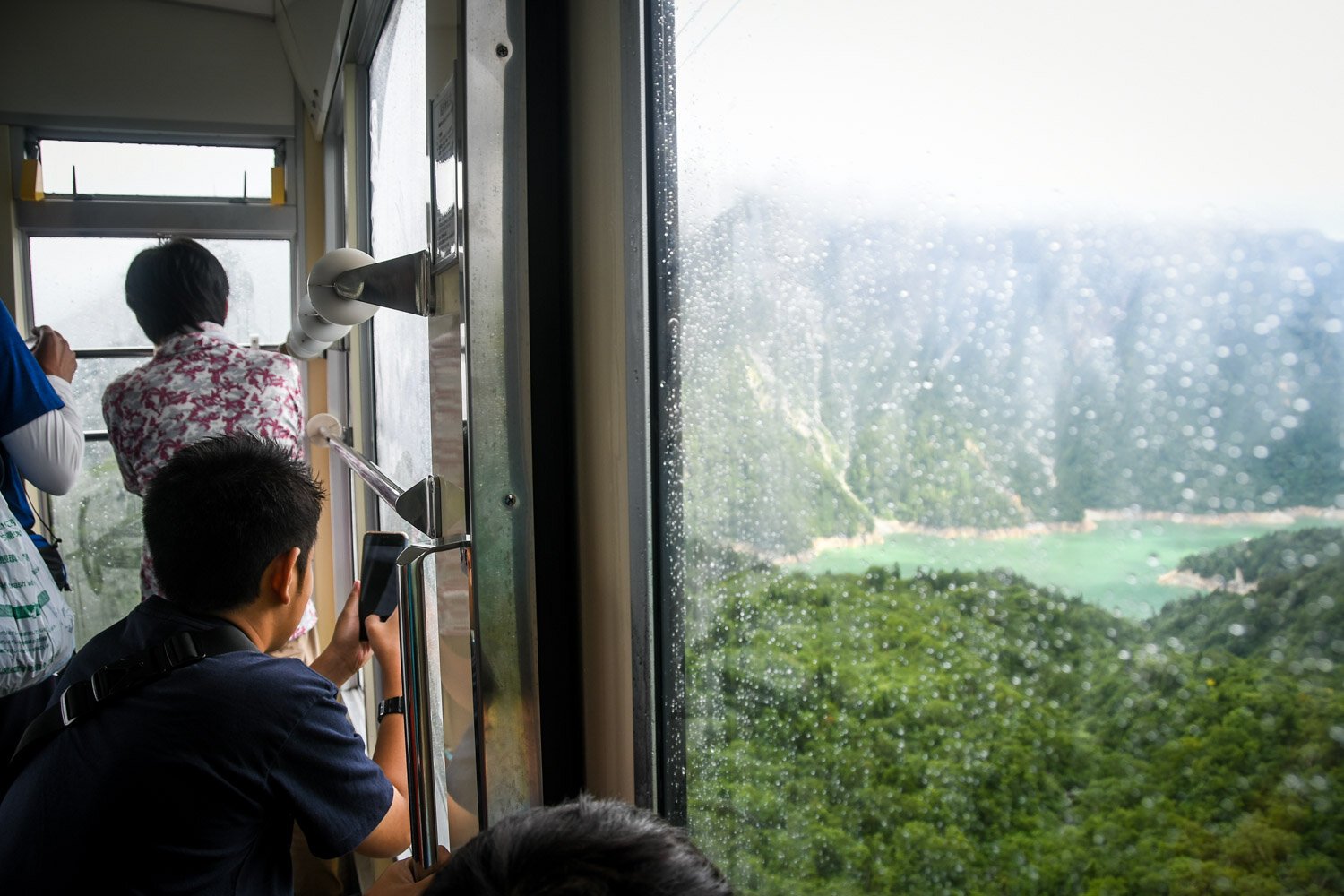
- Next Transportation: Tateyama Ropeway
- Duration: 7 minutes to Kurobedaira
Try to get in the front of the gondola as you leave Daikanbo for the best view. Look around and get a 360-degree view of the mountains surrounding you.
7. Kurobedaira
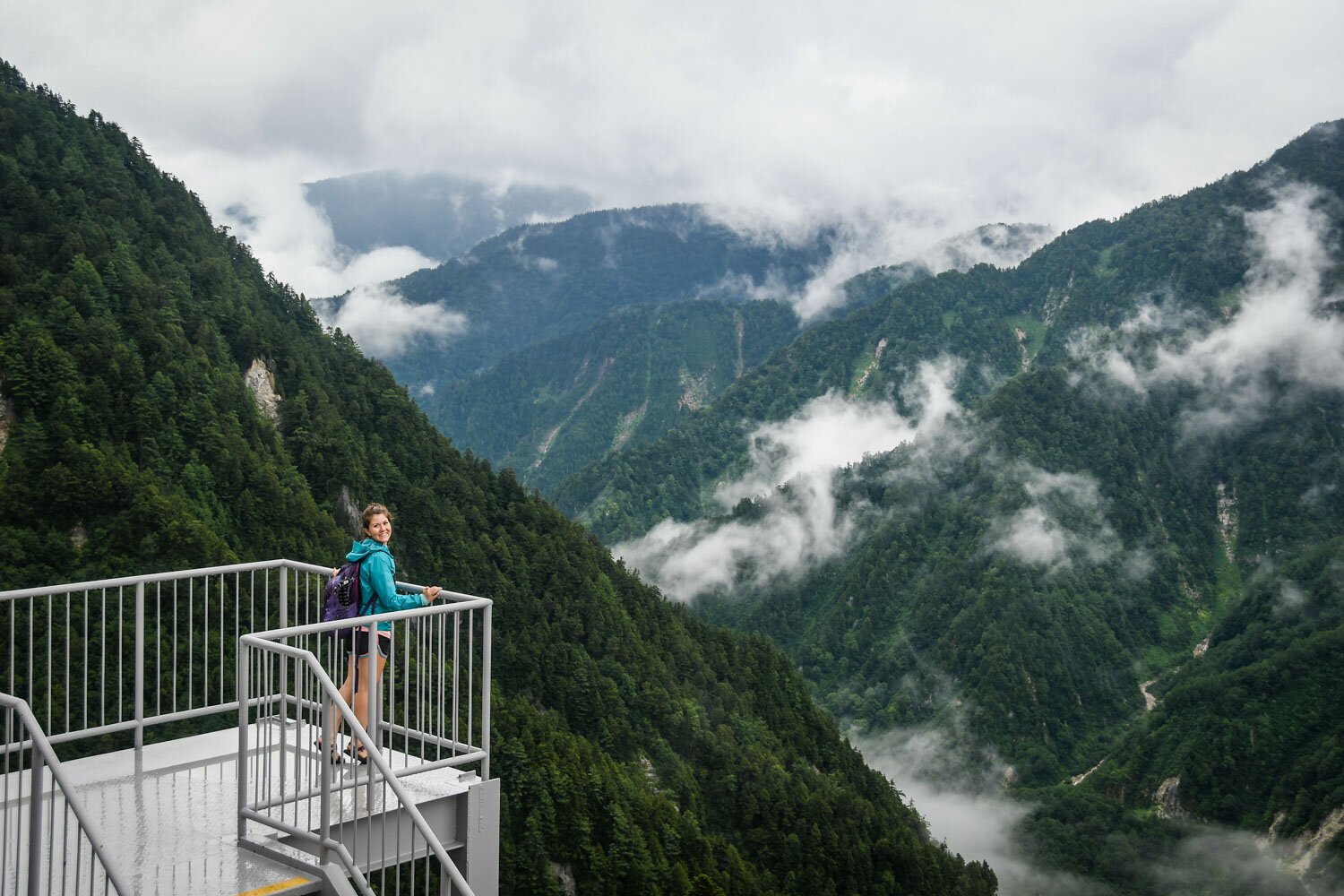
- Elevation: 1,828 m / 5997 ft
This station is simply a connection from the Tateyama Ropeway to the Kurobe Cable Car that takes you down to the Kurobe Dam. However, if you have time, head outside and go to the viewing platform on the roof. You can watch as the gondolas glide into the station.

- Next Transportation: Kurobe Cable Car
- Duration: 5 minutes
Getting lowered down into the dam area is pretty cool. Try to get in the front of the cable car for a decent view.
8. Kurobe Dam

- Elevation: 1,470 m / 4823 ft
This is the highest dam in Japan (are you surprised?) at 181 meters and was quite difficult to build due to its location. In fact, 171 dam workers perished while building the dam and there is a monument for them on the east side of the dam.
From the start, it takes about 15 minutes to walk across the dam and all the viewing platforms are on the east (far) side. As you walk across, be sure to look down at the 10 tons of water per second that spews out of the dam.

Head down to the Rainbow Terrace where the mist from power water discharge can create rainbows which makes for a nice picture with the alps in the background. Next, climb up the 220 steps to get a grand view of the dam and discharge from the observation deck.
Hungry? There is a cafe on the east side of the dam. Apparently, the dam curry is damn good (see what I did there…).
If you have extra time and cash, take the Kurobe lake cruise on Japan’s highest altitude cruise ship. Follow the signs before you cross over the dam. The boat ride takes 30 minutes and is 1,080 yen per person.
Note: It takes about 5-10 minutes to walk from the dam to where the bus stop is, so make sure to leave with plenty of time.
- Next Transportation: Kanden Electric Tunnel Bus
- Duration: 16 minutes
You get to travel through another mountain, this time it’s Mt. Akazawa-dake.
9. Ogizawa Station
- Elevation: 1,433 m
Ah, the last transfer, what a day! There is not really much at this station other than bathrooms, a gift shop and a cafe. This is your last chance to shop for souvenirs if you didn’t pick one up already.
- Next Transportation: Local Bus to Shinano-Omachi Station
- Duration: 40 minutes
10. Shinano-Omachi Station
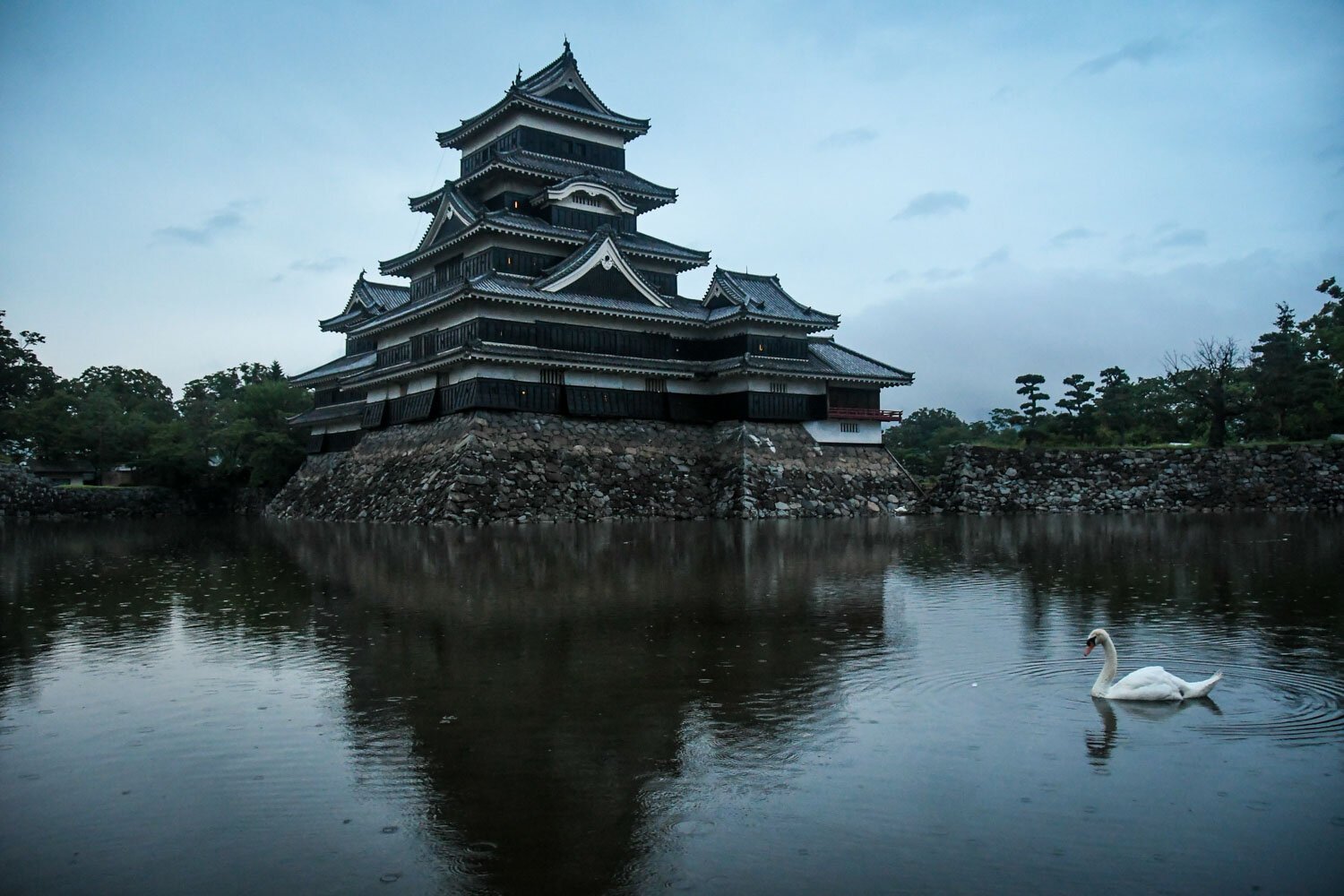
This is your last official stop on the Japan Alpine Route. You can continue to use your Tateyama Kurobe Option Ticket to get to Nagano Station. Or if you have a JR Pass, you are free to travel wherever you’d like on Japan Rail lines.
If you did a luggage transfer, be sure to go pick up your luggage in the building next to the Shinano-Omachi station. When you walk out of the station, the baggage pickup building is to your right.
There is a small noodle soup shop in the Shinano-Omachi station, and the lady behind the counter makes a mean soba noodle bowl! Give it a try if you’re hungry.

Where to stay before and after the route
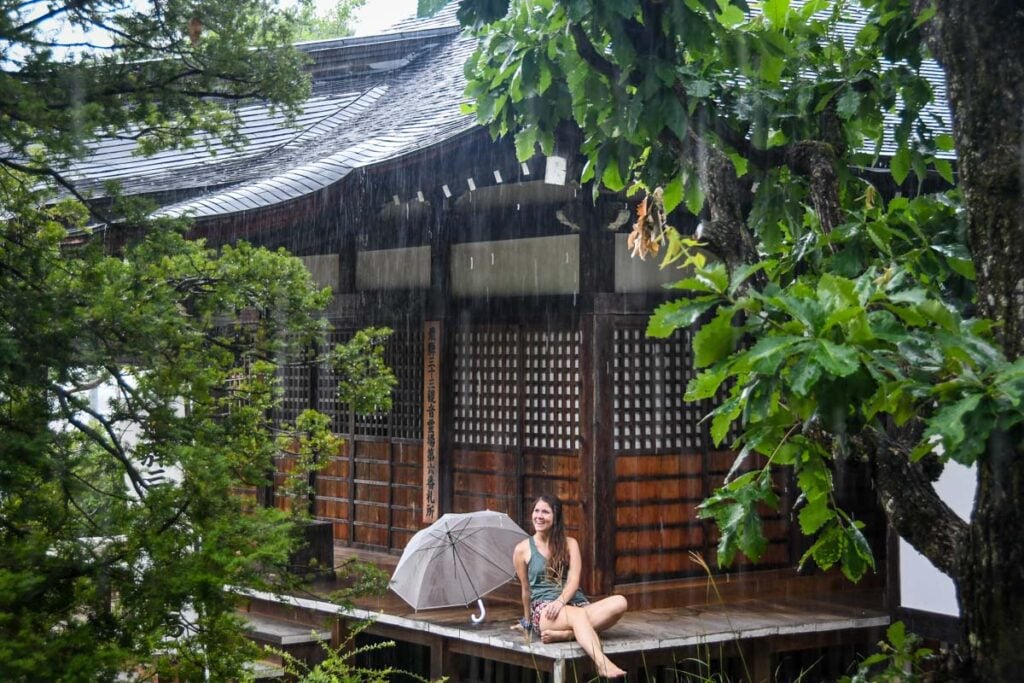
Before you start your travels to the “Roof of Japan” over the Tateyama Kurobe Alpine Route, you’ll want to make sure you secure your accommodation before and after the long day.
If you are planning on traveling west to east, we recommend staying in Toyama the night before. There are tons of nice hotels in Toyama to stay in and we’d recommend staying close to the train station if possible so you can get an early start.
If you’re heading to Nagano, you’ll have loads of choices on hotels in Nagano city, but we’d encourage you to explore outside the city center.
If it’s your first time in Japan you should look into going to the Jigokudani Monkey Park. If you are, we’d recommend staying at Yudanaka Seifuso Ryokan.
It’s steps away from Yudanaka Station and has hot spring onsens, 2 of which you can reserve for private use. You’ll stay in traditional ryokan style rooms and the staff can also prepare a local Japanese dinner for you too.
Staying closer to the Alpine Route has benefits of not adding on extra transportation onto an already long travel day. We recommend staying at Tabi-Shiro in Matsumoto.
You’ll stay in a Japanese style room but there is a communal kitchen where you can cook your own meals. It’s walking distance from the famous Matsumoto Castle and the staff is very helpful and will show you where to go around town.
What to pack for the Tateyama Kurobe Alpine Route

The weather in the mountains changes quickly, so you should be prepared for sun, rain and possibly snow all in one day.
Be sure to check the weather before you go, but here is a good day-pack checklist to start from:
- Comfortable day pack
- Clothes for hiking (wear lots of layers, depending on the time of year)
- Rain jacket
- Packable down jacket (if not summertime, it gets cold up there, trust us)
- Hat and Gloves
- Sun protection: sunglasses and sunscreen (even in colder months!)
- Hiking shoes: We wore our Chacos when we did the Alpine Route in the summertime (and they were perfect for us!), but during cooler seasons, we would have worn hiking boots or sneakers instead.
- Battery pack for charging electronics
- Water bottle and/or Camelbak: remember, it’s safe to drink from the taps in Japan, so you can fill up in towns along the way
- Dry bag: If you encounter rain along the route, you’ll be happy you have a safe place to store any electronics (it happened to us!)
- Camera and tripod (this is our favorite for hiking)
- Snacks: We’d recommend stocking up on some snacks in a bigger city
- Kindle or book: for reading on some of the transportation
- Hiking poles (optional): We chose not to bring poles and were fine (we typically do not use them), however, if you are used to hiking with poles or have bad knees, it might be a good idea.
Be sure to download our complete packing list for Japan! It’s packed with good suggestions and insider tips to help plan your Japan trip. And it’s completely FREE, so why not!?

Luggage delivery
No one wants to carry their big suitcases on and off 8 different modes of transportation in one day. The Tateyama Kurobe Alpine Route has made it easy for you to transfer your luggage from almost any point on the route to your final destination.
Depending on where you drop-off and pick-up your luggage, there are different costs. For us, we dropped off our bags at Toyama Dentetsu Station and picked them up again at Shinano-Omachi Station and it cost 1,500 yen per bag.
You’ll get a little receipt when you drop off your bags, so don’t lose that! Be sure to double-check the drop off times and when you can pick up your bags. Here’s more info on the baggage forwarding service.
How to book the Tateyama Kurobe Alpine Route
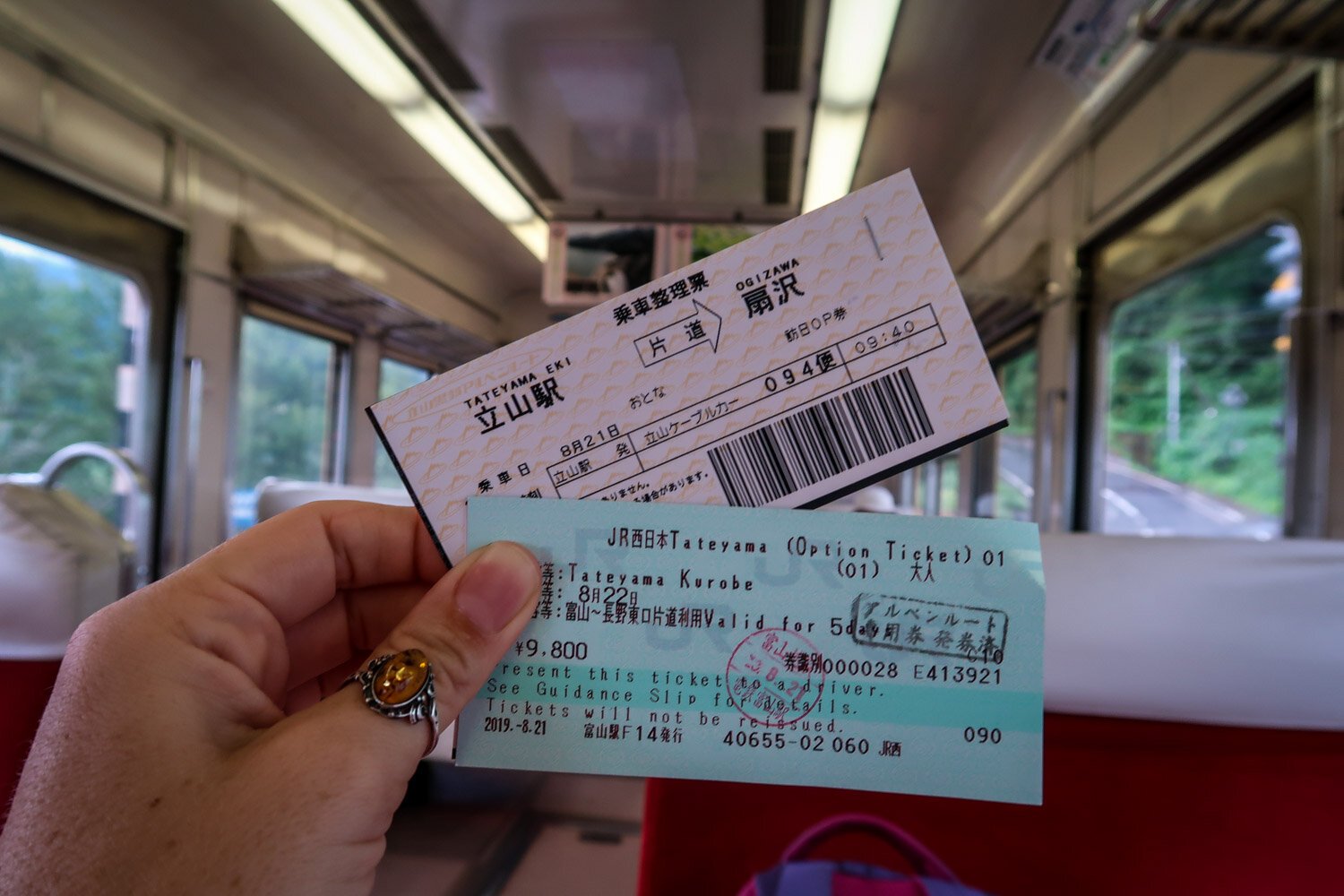
The Tateyama Kurobe Option Ticket costs 9,800 yen per person which saves you at least $20 USD from buying every ticket separately.
To get the Tateyama Kurobe Option Ticket you have to purchase it in person at a JR Station at least one day before you plan on going on the Alpine Route. You can purchase the ticket from any one of these stations:
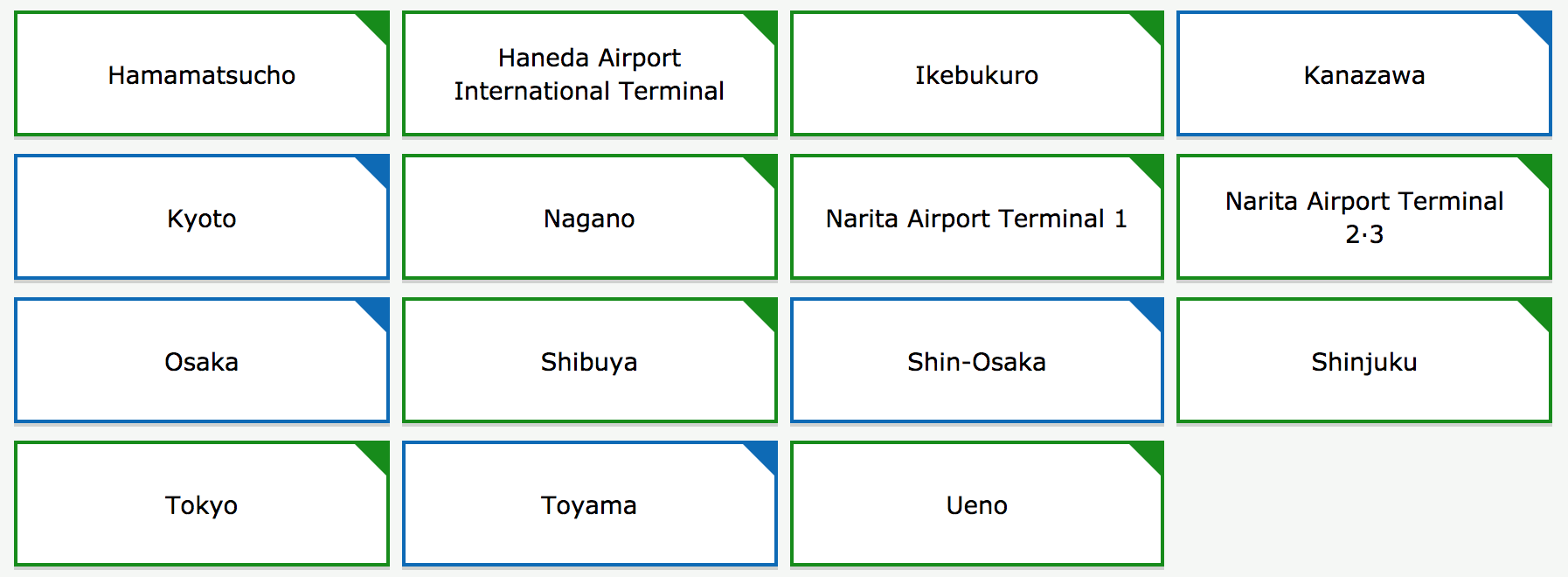
If you’re like us and purchase your ticket while in Toyama, be sure to go to the JR Toyama Station Ticket Counter and not the Toyama Dentetsu Station.
Your ticket is valid for 5 days after you purchase it.
For more information, check out the JR East website.
FAQs about the Tateyama Kurobe Alpine Route in Japan
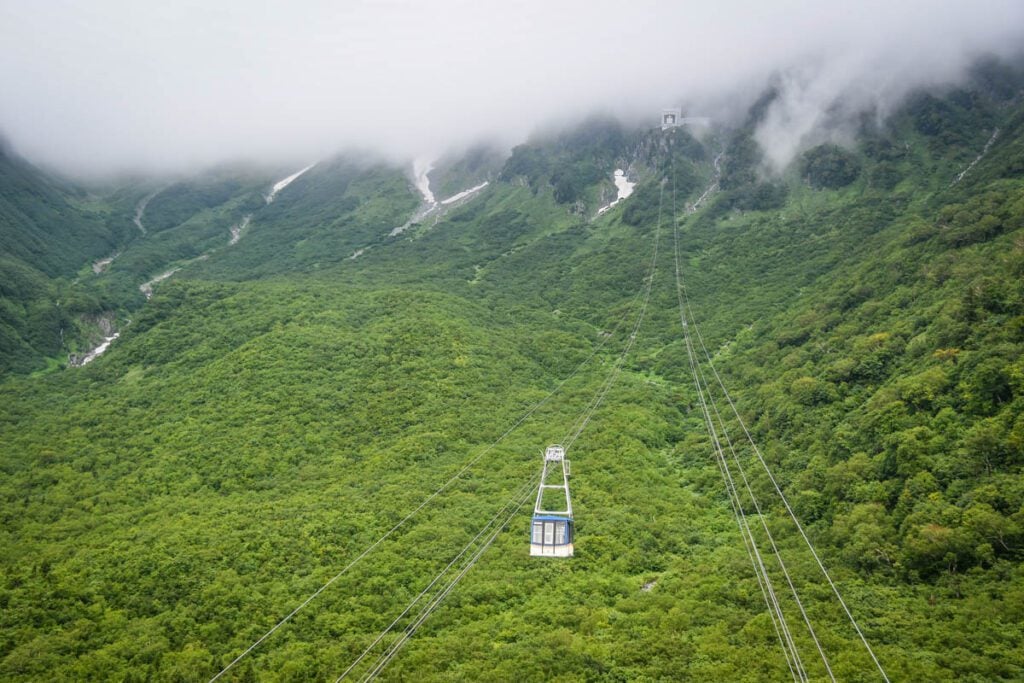
If you’re looking for some quick answers, we’ve got you covered below!
How long does the Tateyama Alpine Route take?
Traversing the entire 90 km route takes about 6 to 7 hours for the average guest. If you spend more time hiking at Murodo Station and at the highest Japanese hot spring it can take up to 8 hours.
Note: Tack on an extra hour if you’re traveling on a weekend or holiday as the queue lines will be longer.
How much does the Tateyama Kurobe Alpine Route cost?
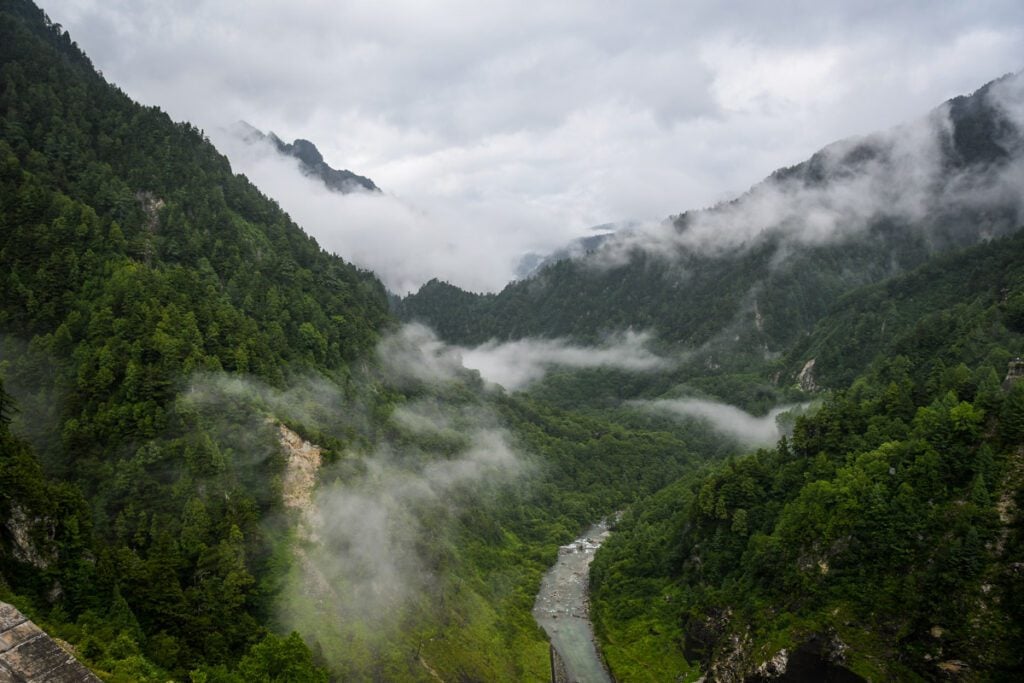
The Tateyama Kurobe Option Ticket, which grants you access to all transportation throughout the route, costs 9,800 yen ($91 USD). This combo ticket saves you around $21 USD per person compared to buying each mode of transportation separately which is around 12,090 yen ($112 USD).
Plus, with the Tateyama Kurobe Option Ticket, you don’t have to worry about waiting in line at the ticket counter, EIGHT times, to get a ticket for each ride. You simply walk up to the queue at each station labeled Option Ticket (which was quite shorter in our experience) and hop on the bus, cable car or ropeway.
The Tateyama Kurobe Option Ticket MUST be purchased at least one day in advance at certain JR stations. These stations include Tokyo, Nagano, Toyama, Kanazawa and several others. For a full list of stations that offer the Option Ticket, head to the JR East site.
Where does the route start and end?

The Tateyama Kurobe Option Ticket is valid from Nagano Station to Omachi Station, over the mountain pass to Tateyama Station and ends at Toyama-Dentetsu Station.
Alternatively you can travel west to east (like we did) in which case you can start in Toyama/Dentetsu Station and end in Nagano or Omachi Station.
Where can I get food along the route?
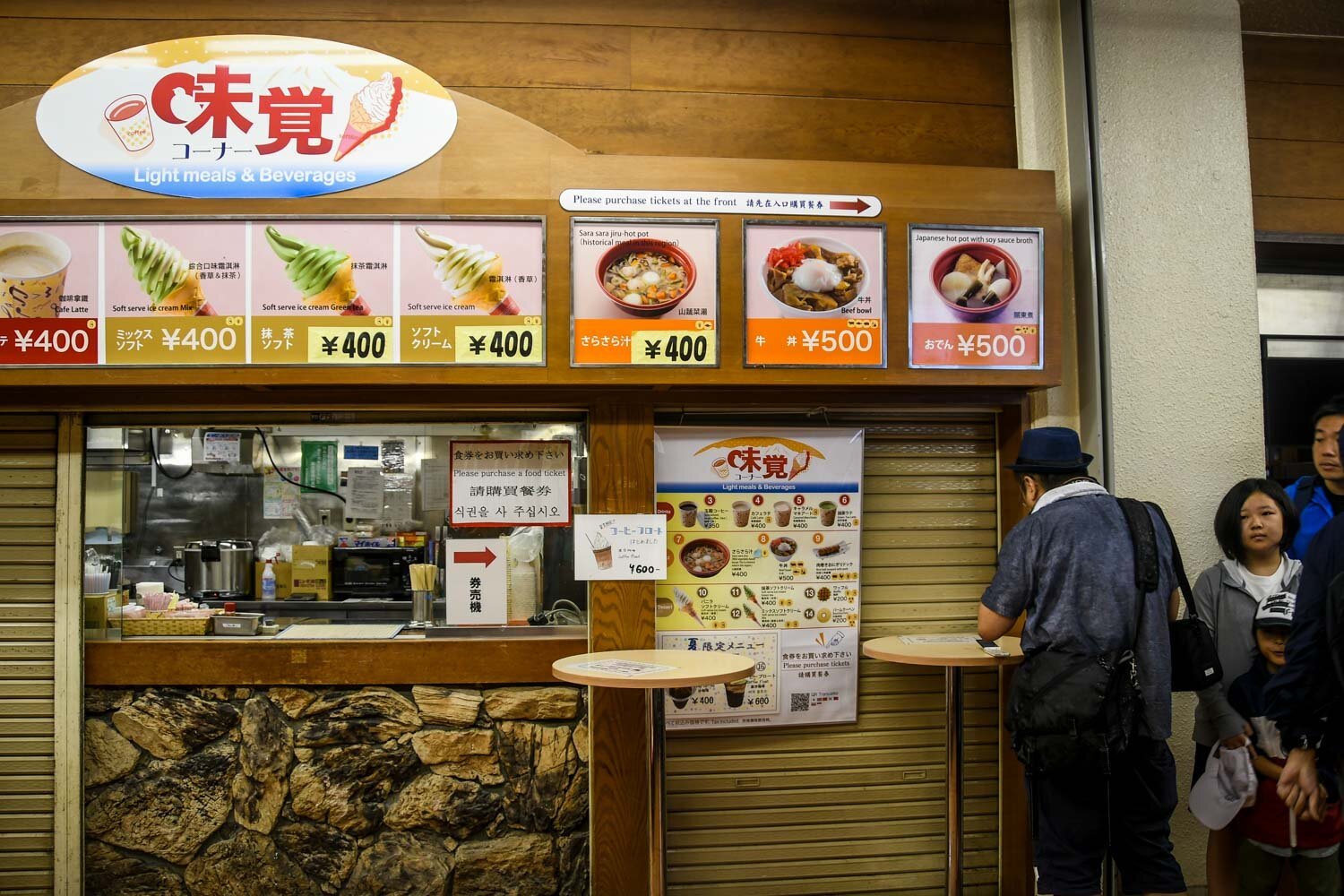
There are many cafes and restaurants along the entire route (almost at every stop). Noodle soup sounds the best on cold days at high altitude and you’ll have the most options at the Murodo Terminal.
We got a veggie noodle soup for 400 yen and it was really good! The beef bowl was 500 yen. There are shops like convenience stores where you can buy dehydrated noodles and other snacks too.
What should I wear to Tateyama-Kurobe Alpine Route?
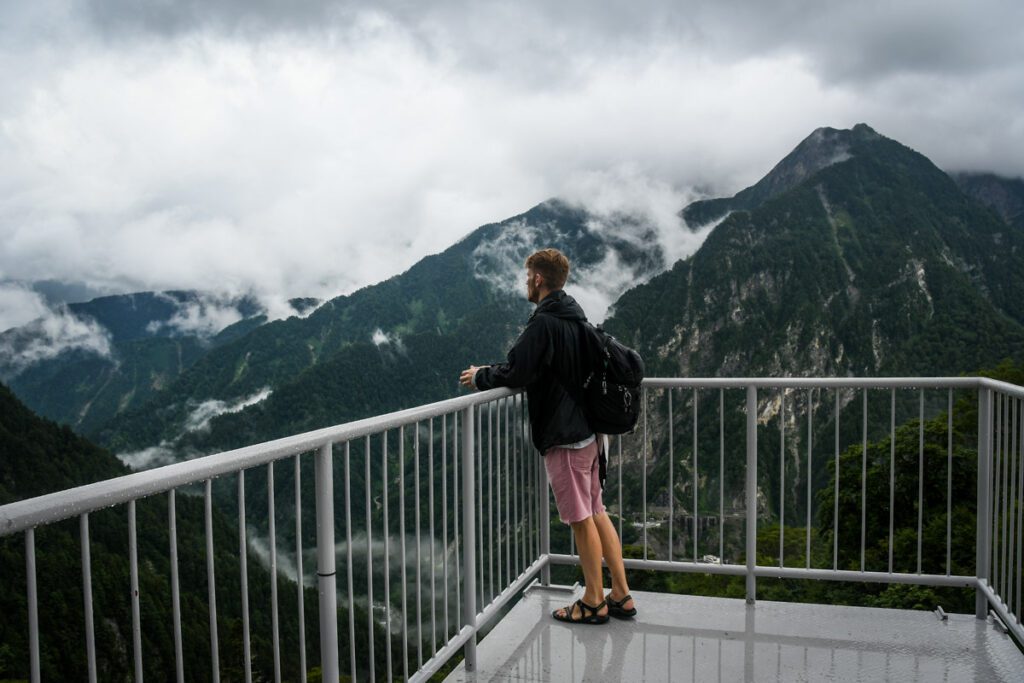
What you wear to traverse the Alpine Route will largely depend on which month you are visiting. However, comfortable clothes you can hike and sit in are key and rainwear is a good idea in every season.
If you plan to do the route in the springtime to early summer (mid-april through June), there will likely still be plenty of snow. You’ll want to make sure you wear plenty of layers in case the midday sun heats up. Waterproof boots for hiking and walking through the snow corridor are recommended as well.
If you are traveling during later summer (July – August) like we did, you can get by wearing Chacos sandals and shorts. But you’ll still want to bring a hoodie or jacket and a rain jacket as well.
Autumn cools down fast on the Alpine Route, so dress in layers with the option of a warmer down jacket (we always travel with package down jackets in cooler climates). And it’s probably better to wear hiking boots or sneakers.
Reference our full packing list.
Does JR pass cover the Alpine Route?

Unfortunately the transportation across the Tateyama Kurobe Alpine Route is not covered on your Japan Rail Pass. You will need to purchase the Tateyama Kurobe Option Ticket separately at a JR Station.
See more information about how to book the Alpine Route.
Plan your trip to Japan
After 3 trips (and counting!), we’ve fallen head over heels for Japan—and we’ve created TONS of resources to help you plan your dream trip. Start with our Ultimate Japan Travel Guide and be sure to check out these helpful articles:
- First time? Our Japan Trip Planner walks you through everything you need to know.
- Use our Japan Rail Pass guide to determine if getting a train pass is optimal for your trip.
- Here’s our curated list of the best things to do in Japan—from iconic sights to once-in-a-lifetime experiences.
- Not sure where to go? Our Japan itinerary ideas will help you map it all out.
- Foodies, rejoice! This guide to what to eat in Japan will have you drooling before you land.
- This guide to what to wear in Japan (and what not to wear) will help you blend in.
- Use our ultimate Japan Packing List to make sure you don’t forget anything.
- Before you go, brush up on these essential Japan travel tips (including major do’s and don’ts!).
- Avoid awkward moments by brushing up on Japanese etiquette.
Still have questions? Drop us a comment—we LOVE helping travelers plan unforgettable trips to Japan!
Perfect Japan itinerary
Want the perfect itinerary planned for you?

If you don’t have a ton of time to spend planning your Japan itinerary (or you just don’t find travel planning fun), we’ve got something you might be interested in…
We created the ultimate done-for-you Japan itinerary that is packed full of all sorts of tips we’ve gathered from 3 trips to Japan as well as literally hundreds of hours of research (no exaggeration).
We have both an off-the-beaten path route as well as a classic itinerary that hits the top attractions (perfect for your first visit to Japan!).
Don’t miss your chance to grab our Japan packing list!
This FREE PDF download includes everything you’re going to want to pack for your Japan trip, including what NOT to bring, plus tons of insider tips!
Just enter your email and we’ll immediately send you access instructions!
Save this article to Pinterest for later!
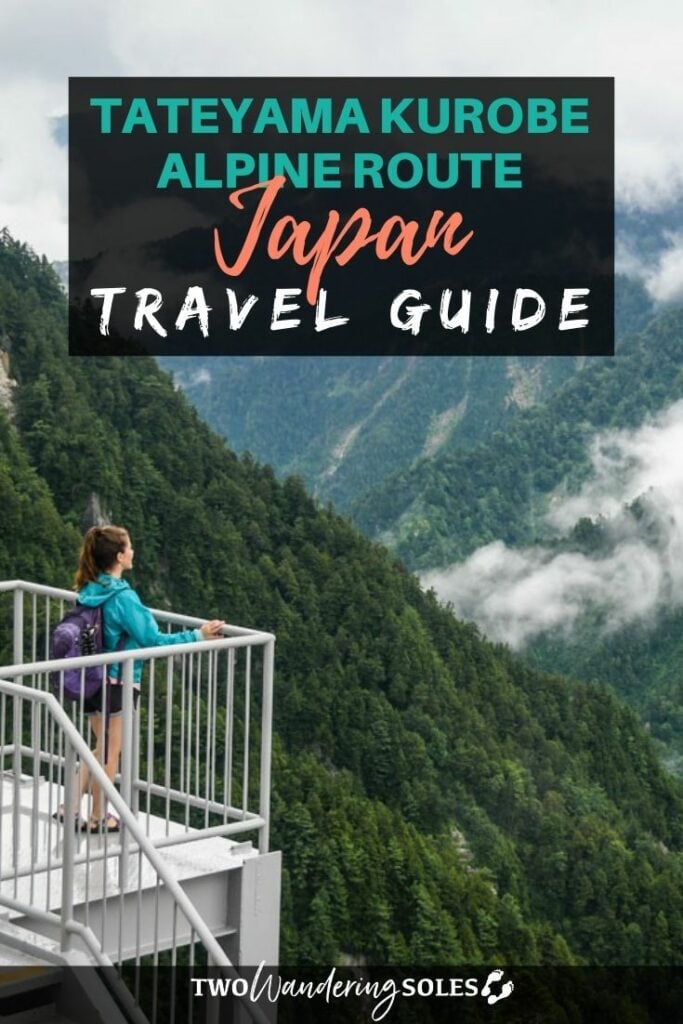
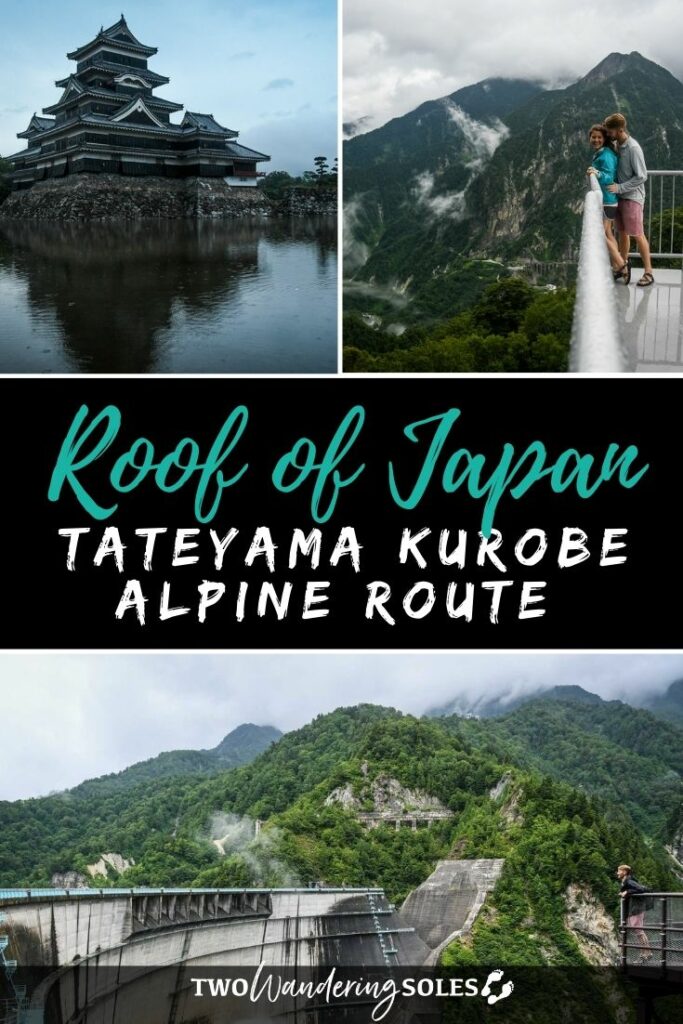
We want to hear from you!
Would you go on the Tateyama Kurobe Alpine Route? Have you ever seen the Snow Wall? Let us know what questions you have in the comments below.


Hi are there lots of stairs involved in this route?
A very informative article. The route is a bit intimidating for a mid-80’s person but I am active and healthy. I would have to look into one or two overnight stays on this trip.
A very informative article. The route is a bit intimidating for a mid-80’s person but I am active and healthy. I would have to look into one or two overnight stays on this trip.
A very good write up on Japan’s Alpine route.Thanks